assume ds:data, cs:code, ss:stack data segment db 16 dup(0) ; 16 byte units are reserved, and the initial values are 0 data ends stack segment db 16 dup(0) ;16 byte units are reserved, and the initial values are 0 stack ends code segment start: mov ax, data mov ds, ax mov ax, stack mov ss, ax mov sp, 16 ; Set stack top mov ah, 4ch int 21h code ends end start
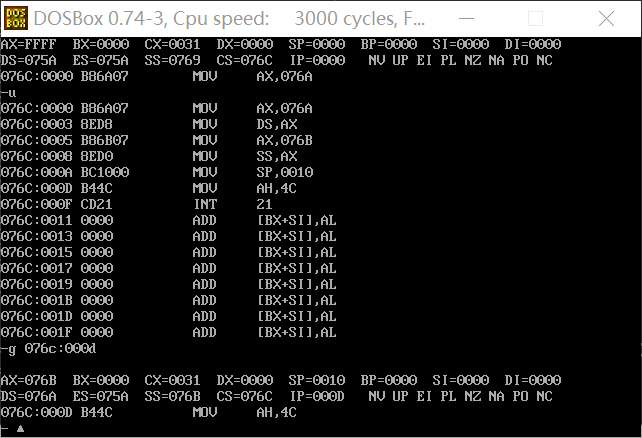
① In debug, it will be executed until the end of line17 and before line19. At this time, record: register (DS) = 076AH__, Register (SS)=
assume ds:data, cs:code, ss:stack
data segment
db 4 dup(0) ; Four byte units are reserved, and the initial value is 0
data ends
stack segment
db 8 dup(0) ; 8 byte units are reserved, and the initial values are 0
stack ends
code segment
start:
mov ax, data
mov ds, ax
mov ax, stack
mov ss, ax
mov sp, 8 ; Set stack top
mov ah, 4ch
int 21h
code ends
end start
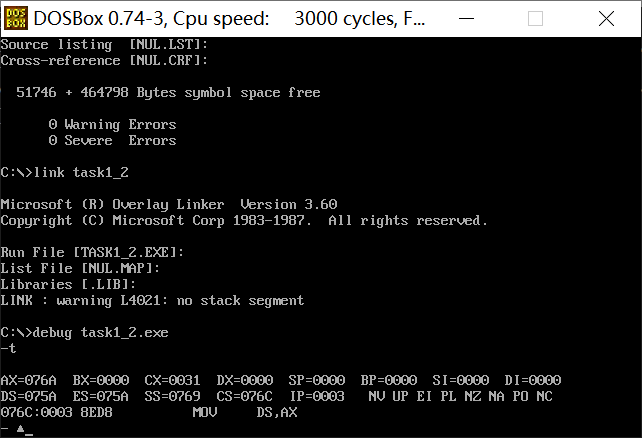
assume ds:data, cs:code, ss:stack
data segment
db 20 dup(0)
data ends
stack segment
db 20 dup(0)
stack ends
code segment
start:
mov ax, data
mov ds, ax
mov ax, stack
mov ss, ax
mov sp, 20
mov ah, 4ch
int 21h
code ends
end start
① In debug, execute until the end of line17 and before line19. Record this time: register (DS) =_ 076AH___, Register (SS)=
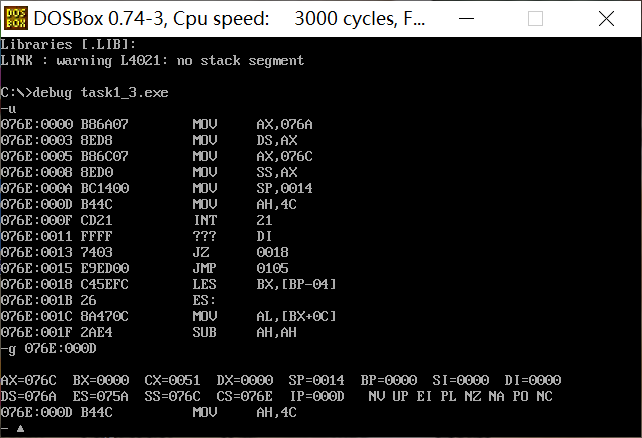
assume ds:data, cs:code, ss:stack
code segment
start:
mov ax, data
mov ds, ax
mov ax, stack
mov ss, ax
mov sp, 20
mov ah, 4ch
int 21h
code ends
data segment
db 20 dup(0)
data ends
stack segment
db 20 dup(0)
stack ends
end start
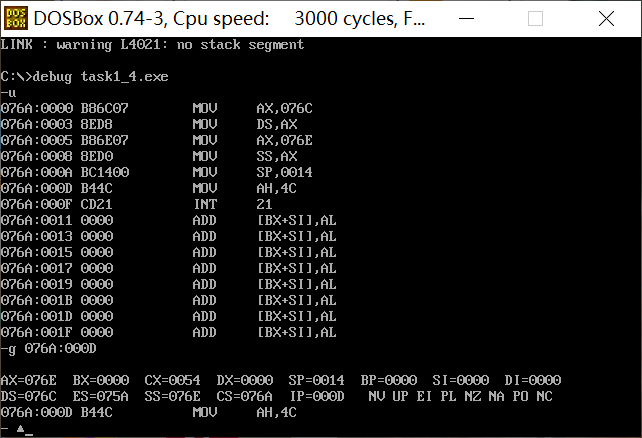
② If the pseudo instruction end start is changed to end in the programs task1_1.asm, task1_2.asm, task1_3.asm and task1_4.asm, which program can still be executed correctly? Analyze and explain the reasons in combination with the conclusions obtained from practical observation.
assume cs:code
code segment
start:
mov ax, 0b800h
mov ds, ax
mov bx, 0f00h
mov cx, 80
s:mov [bx], 0403h
add bx, 2
loop s
mov ah, 4ch
int 21h
code ends
end start
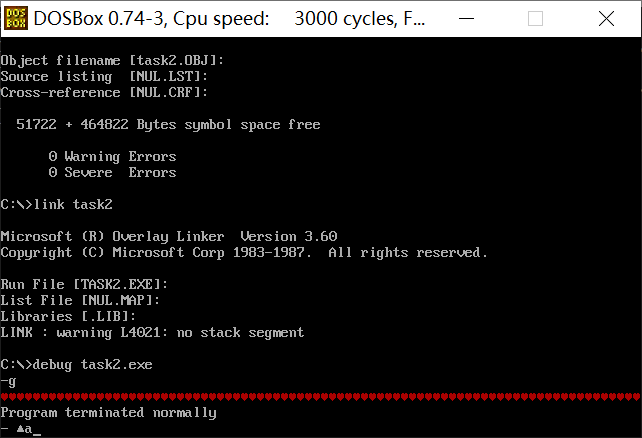
assume cs:code
data1 segment
db 50, 48, 50, 50, 0, 48, 49, 0, 48, 49 ; ten numbers
data1 ends
data2 segment
db 0, 0, 0, 0, 47, 0, 0, 47, 0, 0 ; ten numbers
data2 ends
data3 segment
db 16 dup(0)
data3 ends
code segment
start:
mov ax, data1
mov ss, ax
mov ax, data2
mov es, ax
mov ax, data3
mov ds, ax
mov bx, 0
mov cx, 10
s:mov al, ss:[bx]
add al, es:[bx]
mov [bx], al
add bx, 1
loop s
mov ah, 4ch
int 21h
code ends
end start
requirement:
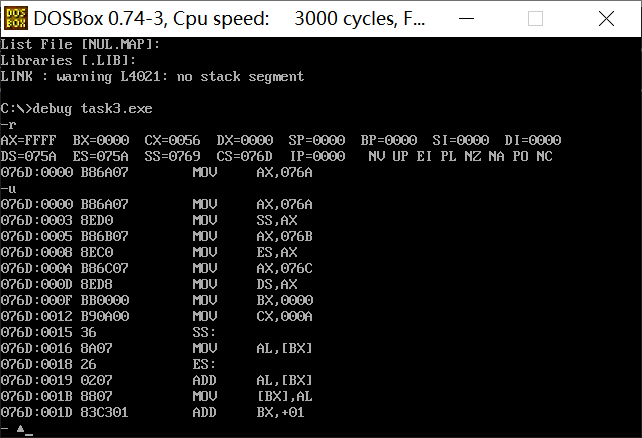
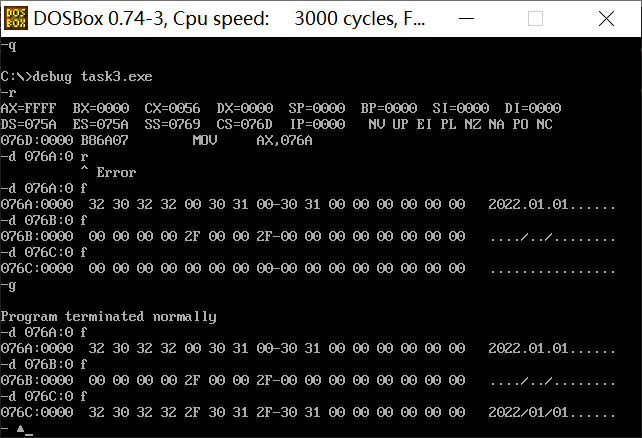
assume cs:code, ss:data1, ds:data2
data1 segment
dw 2, 0, 4, 9, 2, 0, 1, 9
data1 ends
data2 segment
dw 8 dup(?)
data2 ends
code segment
start:
mov ax, data1
mov ds, ax
mov ax, data2
mov ss, ax
mov sp, 10h
mov bx, 0
mov cx, 8
s:push [bx]
add bx, 2
loop s
mov ah, 4ch
int 21h
code ends
end start
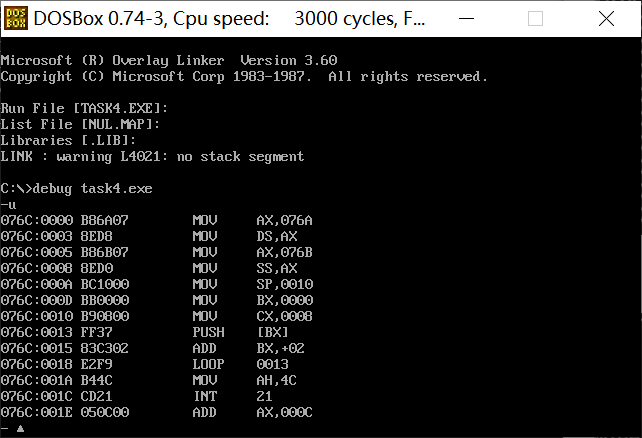
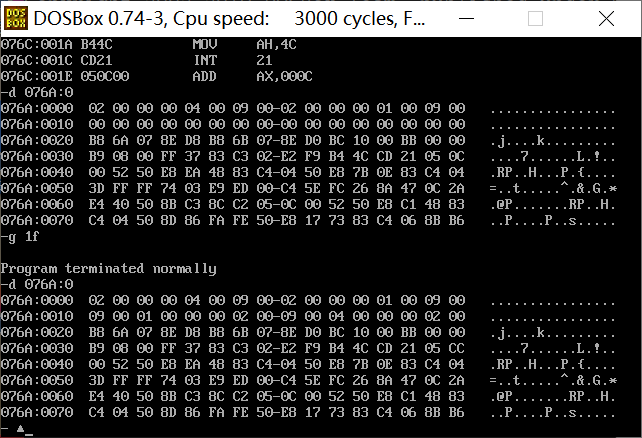
assume cs:code, ds:data
data segment
db 'Nuist'
db 2, 3, 4, 5, 6
data ends
code segment
start:
mov ax, data
mov ds, ax
mov ax, 0b800H
mov es, ax
mov cx, 5
mov si, 0
mov di, 0f00h
s: mov al, [si]
and al, 0dfh
mov es:[di], al
mov al, [5+si]
mov es:[di+1], al
inc si
add di, 2
loop s
mov ah, 4ch
int 21h
code ends
end start
Read the source program, theoretically analyze the functions of the source code, especially line15-25, what are the functions realized by the loop, and understand the functions of each instruction line by line.
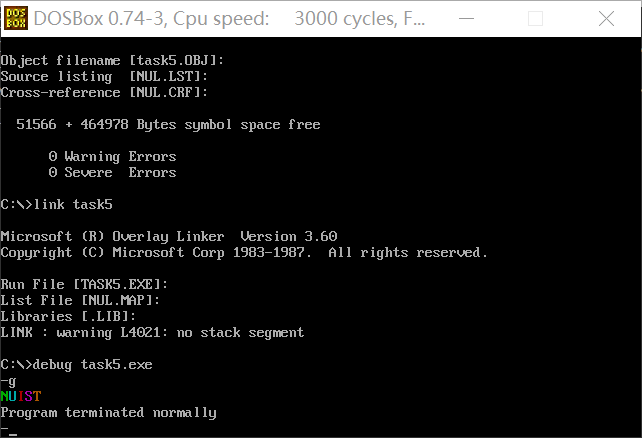
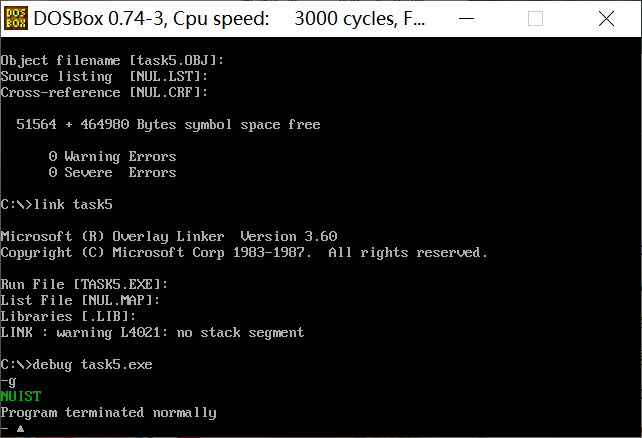
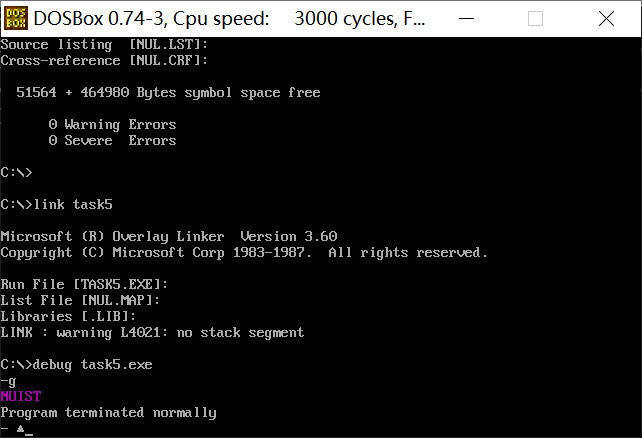
assume cs:code, ds:data
data segment
db 'Pink Floyd '
db 'JOAN Baez '
db 'NEIL Young '
db 'Joan Lennon '
data ends
code segment
start:
mov ax, data
mov ds, ax
mov bx, 0
mov cx, 4
s:mov ax, cx
mov cx, 4
t:or byte ptr [bx], 20h
inc bx
loop t
add bx, 12
mov cx, ax
loop s
mov ah, 4ch
int 21h
code ends
end start
requirement:
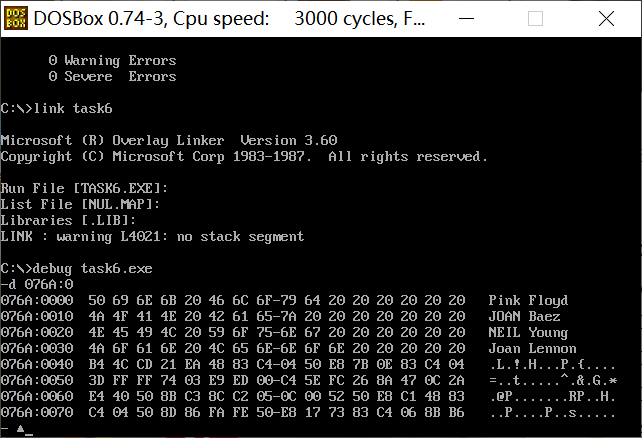
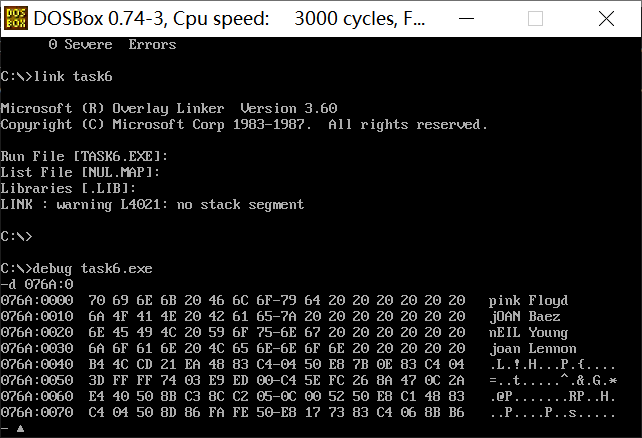
assume cs:code, ds:data, es:table
data segment
db '1975', '1976', '1977', '1978', '1979'
dw 16, 22, 382, 1356, 2390
dw 3, 7, 9, 13, 28
data ends
table segment
db 5 dup( 16 dup(' ') ) ;
table ends
code segment
start:
mov ax, data
mov ds, ax
mov ax, table
mov es, ax
mov si, 0
mov di, 0
mov dx, 0
mov bx, 0
mov cx, 5
s:mov ax, word ptr ds:[di]
mov word ptr es:[bx], ax
mov ax, word ptr ds:[di].2
mov word ptr es:[bx].2, ax
mov ax, word ptr ds:[si].20
mov word ptr es:[bx].7, ax
mov ax, word ptr ds:[si].30
mov word ptr es:[bx].10, ax
mov ax, ds:[si].20
mov dl, ds:[si].30
div dl
mov byte ptr es:[bx].14, al
add di, 4
add si, 2
add bx, 16
loop s
mov ah, 4ch
int 21h
code ends
end start
② After assembly and connection, load and debug the program in debug. Use u command, g command and d command flexibly and reasonably to display the data information of the logical segment table at the beginning, and the data information of the data segment table after structurally storing the data to confirm the realization of the problem requirements
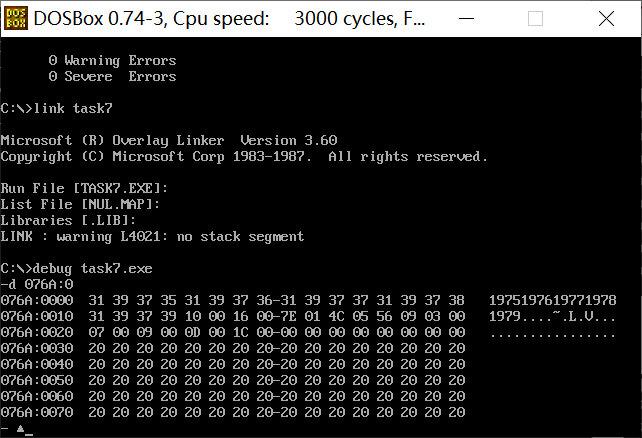
Problem: unable to write data